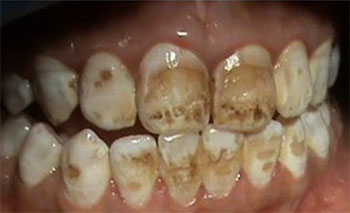FLUOROSIS
“She doesn’t smile these days, and when she does, she covers her teeth with her hand.” The mother sighed and leaned back on the chair. ” Ask her! Why she is always shy? She says it’s her dirty teeth , or whatever you dentists call them…”
I stiffened. Use of language, by a parent, often stigmatizes the condition and worsens the child’s emotional response to the dental condition.
I recognized that this was more a question of mastery of the English language, and cultural direct translation than willful carelessness.
“My dear”, I began. ” Baby girl’s teeth are not dirty at all. This is a very common condition in Kenya. It is called Fluorosis. In fact, scientists say that fluorosis is “endemic” in those parts of the Rift Valley , where you have lived since she was born; meaning that most people there have this condition. ”

The child lifted her large brown eyes to me and smiled shyly, for the first time.
I continued, lifting her chin with my finger, ” You are blessed with a beautiful girl, so photogenic. ” The smile became a full on grin. “Fluorosis is found in many parts of Kenya, because the ground water is affected by the volcanic soils. In your daughters case, we can carry out Teeth whitening. In her case the surfaces of her teeth are brown but there is no chipping or denying, so we can do whitening.
It’s advantage veneers or crowns, is that it does not destroy her valuable enamel layer, and we can achieve 7-9 shades whiter. ”
She animated and turned to her mother, “Mom please , let’s do it?”
Boom, I thought, done.


